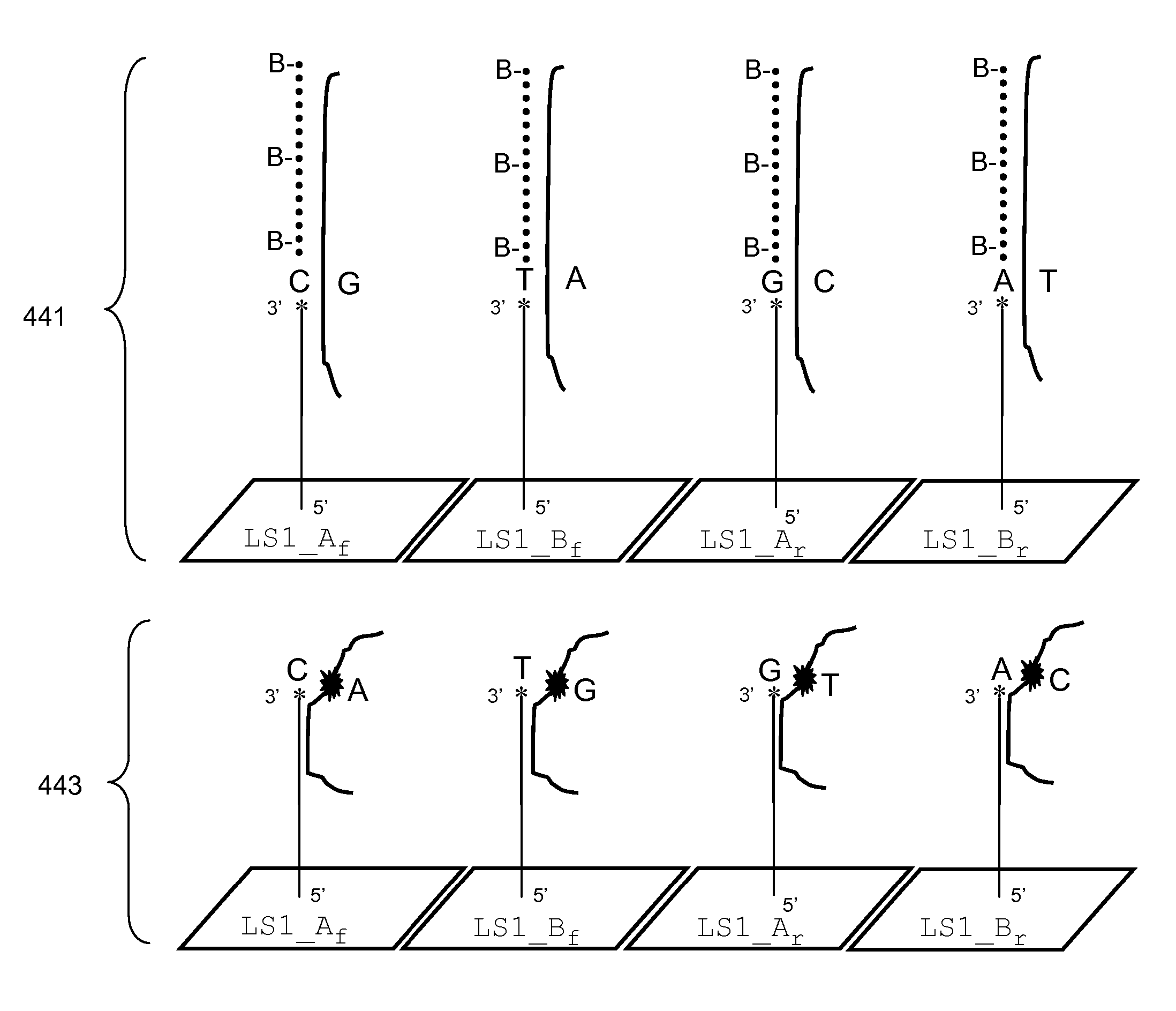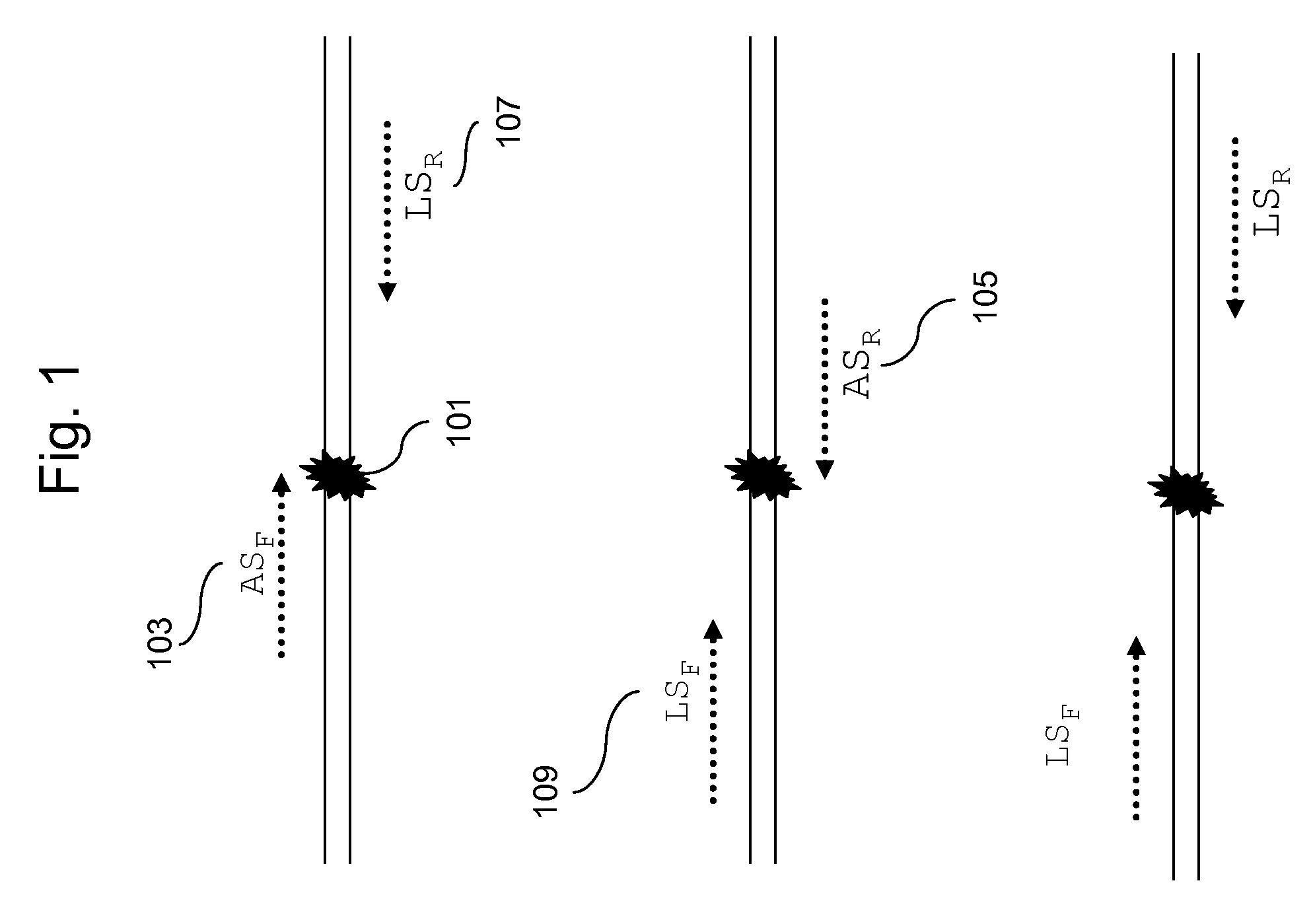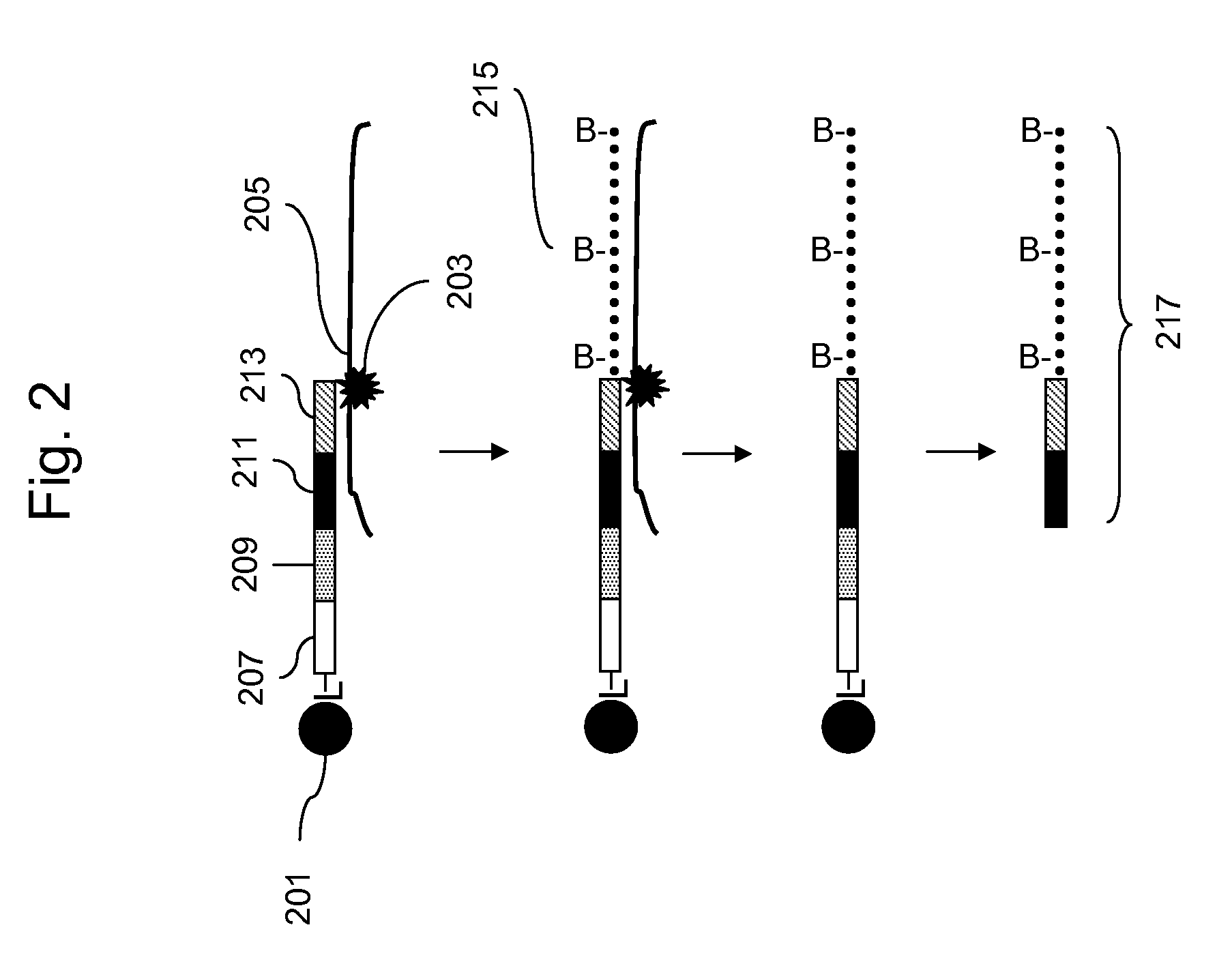Methods for Genotyping
a genotyping and method technology, applied in the field of genotyping methods, can solve problems such as the complexity of genomes, and achieve the effect of managing or reducing the complexity of nucleic acid samples
- Summary
- Abstract
- Description
- Claims
- Application Information
AI Technical Summary
Benefits of technology
Problems solved by technology
Method used
Image
Examples
example 1
Msp Digestions of HTR2A PCR Product
[0091] HTR2A PCR products were taken from 16 individuals, digested with the restriction enzyme Msp and the samples were run on a gel. The genotypes of the 16 individuals were the following: 1 individual with a TT genotype, 7 individuals with a CT genotype, and 8 individuals with a CC genotype. Individuals with a CT genotype produce two distinct bands on the gel in which the second band is aligned equally with one band produced for individuals with CC genotype. The first band of the CT genotype is higher on the gel than CC genotype band. Individuals with TT genotype have one distinct band that is higher on the gel than the individuals with CC genotype. The experiment showed that Msp digestion worked on individuals with a CT genotype.
example 2
Exonuclease Sensitivity of Primers
[0092] Allele specific forward primers were run with different polymerases and phosphorothioate linkages. The primers were incubated with no enzyme, vent polymerase, deep vent polymerase, and deep vent (exo-) polymerase with 0, 1 and 3 phosphorothioate linkages. All products were incubated at 72° C. for 45 minutes. The products were run on a 8M urea 15% acrylamide gel and stained with Sybr Green. No distinct bands were observed in the lanes where the primers had 0 phosphorothioate linkages in the vent polymerase or deep vent polymerase lanes. Distinct bands were found in other lanes. The experiment showed that allele specific forward primers are resistant to 3′to 5′ exonuclease activity only if they contain at least one phosphorathioate linkage.
example 3
Phosphorothioate Linkages Increase Specificity of PCR
[0093] Samples were run on a gel with individuals with CC genotype, TT genotype, and no DNA and these samples varied with 0, 1, and 3 phosphorothioate linkages. The gels were on Pfu Ultra at 55° C., 60° C., and 65° C. The results showed that no bands in the no DNA lanes at all temperatures. Bands were visible in lanes with 1 or 3 phosphorothioate linkages with respect to CC genotype and TT genotype at all temperatures. However, no band was visible in the TT genotype lane with 0 phosphorothioate linkages at all temperatures. The results indicate phosphorothioate linkages help to increase the specificity of standard solution phase PCR.
PUM
| Property | Measurement | Unit |
|---|---|---|
| wavelength | aaaaa | aaaaa |
| wavelength | aaaaa | aaaaa |
| wavelength | aaaaa | aaaaa |
Abstract
Description
Claims
Application Information
 Login to View More
Login to View More - R&D
- Intellectual Property
- Life Sciences
- Materials
- Tech Scout
- Unparalleled Data Quality
- Higher Quality Content
- 60% Fewer Hallucinations
Browse by: Latest US Patents, China's latest patents, Technical Efficacy Thesaurus, Application Domain, Technology Topic, Popular Technical Reports.
© 2025 PatSnap. All rights reserved.Legal|Privacy policy|Modern Slavery Act Transparency Statement|Sitemap|About US| Contact US: help@patsnap.com



